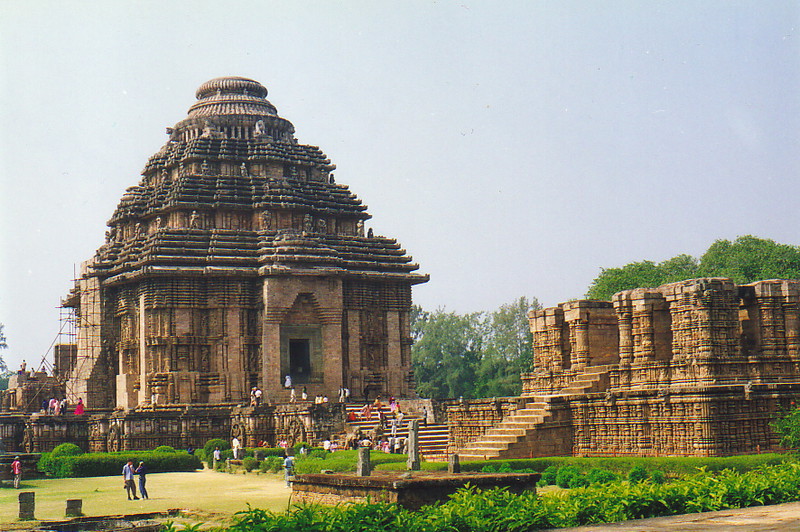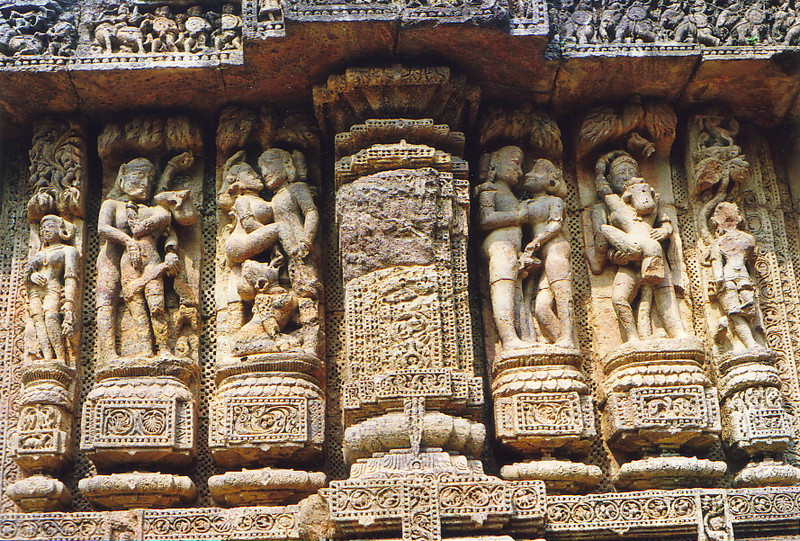
Puri is a procrastinator's paradise, but after a couple of days of finding my bearings, I decided I had to ease myself out of the restaurant-by-the-sea experience to explore the biggest tourist attraction in the area: the Sun Temple in Konark. A World Heritage site – always a good pointer, especially in India, which is home to lots of them – it's a gorgeous sandstone building, smothered in intricate carvings in the way that most Hindu temples are. However, Konark's carvings have a subject matter that is a world away from the seriousness of many other temples; Konark specialises in the (t)horny subject of sex.

From intricate carvings of monogamy in a whole range of positions, to polygamy with varying numbers of women, up to polyandry and a whole parade of erect penises, Konark is fascinating. Created in celebration of Surya, the Sun God, it is aligned east-west and takes the form of a huge chariot, with carved wheels down the side that double as sun clocks. Eric and I took a guide, who delighted in pointing out particularly interesting sculptures, such as the dog licking a woman in, well, yes, that way, and the man with an infected and swollen manhood all bundled up in a painful-looking bandage; he managed to impart a lot of information, despite his wonderfully heavy Indian accent1, which made it rather hard to understand some of the more technical references to sex. Heck, it's an ambiguous enough subject in plain English...

Konark is well worth the visit, even if there are plenty of touts chanting, 'I show you erotic sculpture, very sexy postcards, very nice, just looking, cheap price,' all day long. But then again, there are plenty of tourists there, mainly Indians, and where there are tourists, there are the trappings of tourism. Indeed, Indian tourists are a sight in themselves: smart2, well dressed and polite, they seem to fail the test when it comes to respecting their historical sites. Despite the barriers stopping the crowds from approaching certain areas of the monument, there are always plenty of Indians scrabbling over the fragile sandstone; as a result the site is policed by people with whistles who blow like crazy whenever they see anyone climbing where they shouldn't. They don't actually do anything, but they sure do make a lot of noise...
And the bus journey there and back proves that the Indian concept of 'full' is equalled only by the Indonesians. Jammed on the back seat, I thanked my lucky stars that I've learned to control my claustrophobia. What a shame my sense of smell is still acute; having your head jammed up someone else's armpit for an hour on a tropical bus isn't my idea of heaven, though I wouldn't be surprised if there's a Konark sculpture on the very subject...
1 English is the lingua franca in India (often it's the only way for two Indians from disparate areas to communicate), but it's not so much English, more Inglish. Take the bobbling accent of the Indian living in England and make it thicker, and you end up with a wonderfully musical sound that reminds me of a muddy tide lapping against a dock pile. It might not always be easy to understand, but it's always a joy to listen to.
2 Middle-class Indians are exceptionally well turned out. The men have their standard shirts and trousers, which are well pressed but fairly drab, but the women are sheer celebrations of colour, with wonderful sarees, golden earrings and necklaces, bangles and ankle bracelets, and a sense of style that's unique and effective. Their hair is always clean and tied up neatly, whether in a bun or the popular plaited ponytail, and is secured with exotic brooches, flowers or pretty hair bands. Seeing how a lot of people live in India, it's a testament to them that they consistently manage to look so smart; it's a delight to behold.